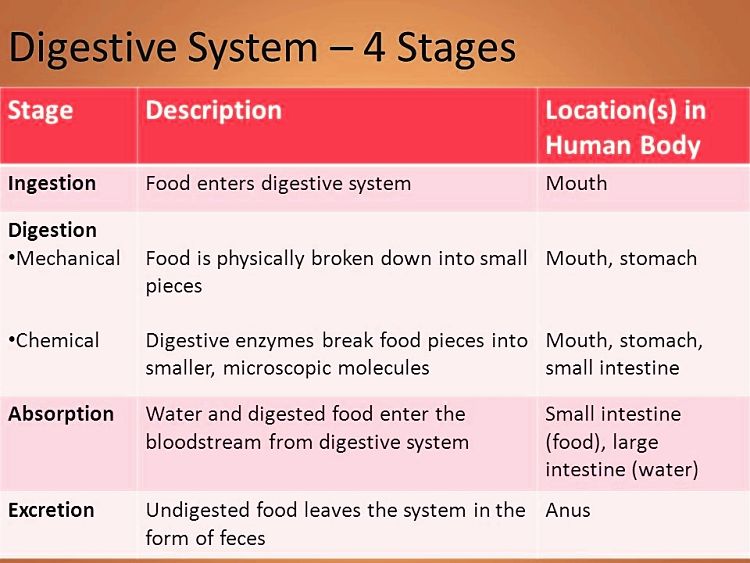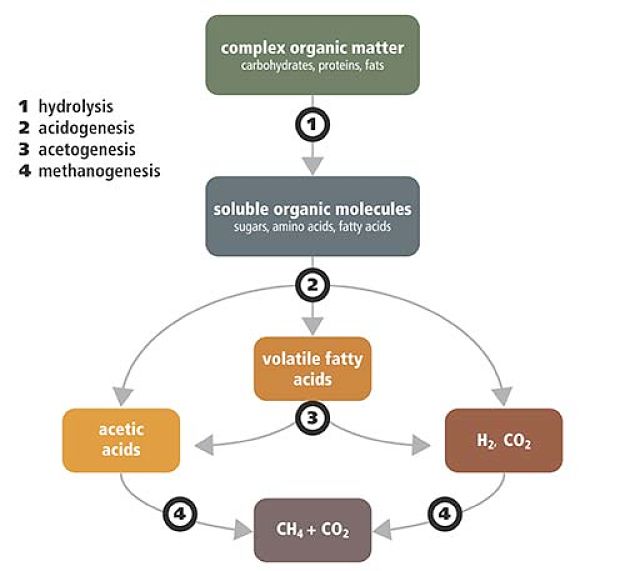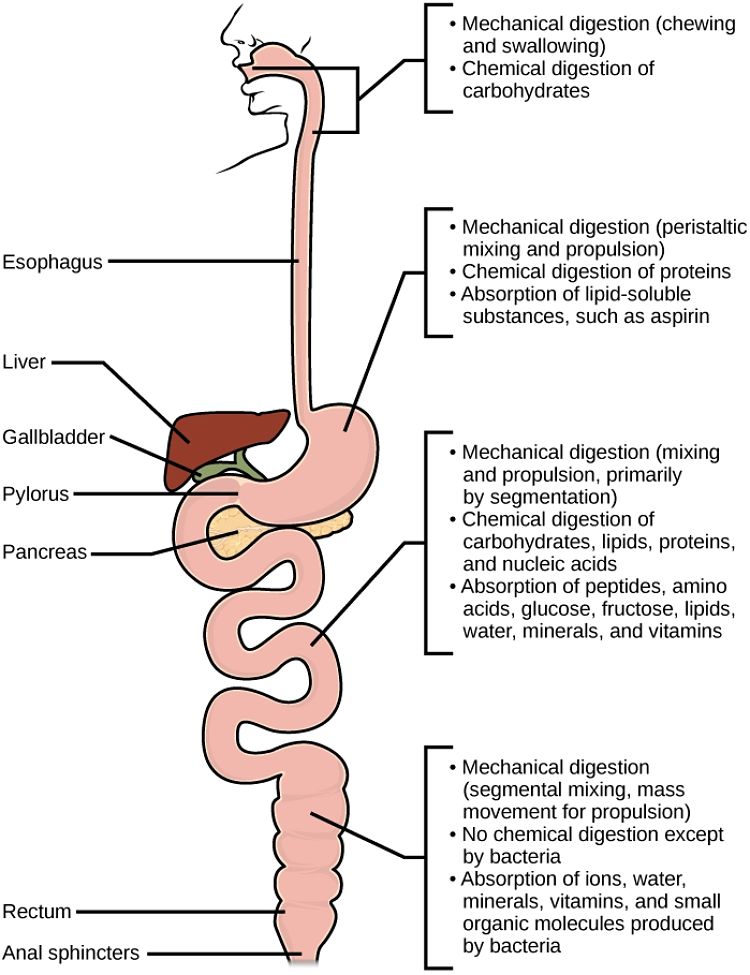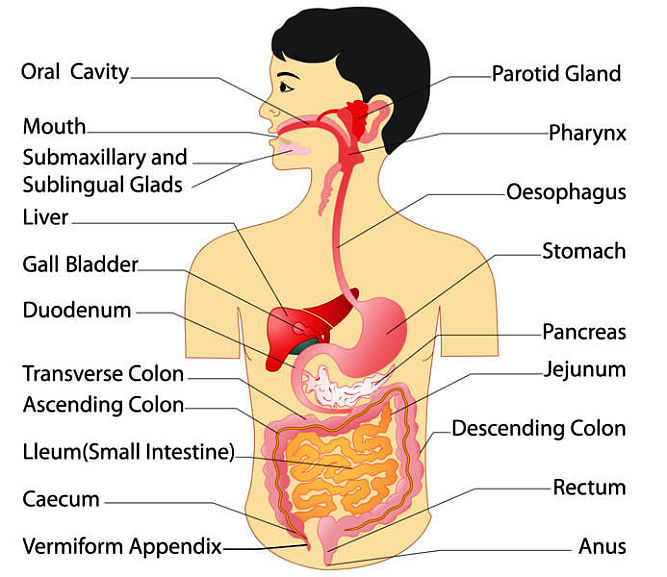How Long Does It Take To Digest Food and Absorb Nutrients?
You can only benefit from nutrients if your digestion process is efficient and effective. It helps to know the typical time frame for your digestive processes and nutrient absorption. Food bound-up in fiber may pass through your gut without being fully digested. Understanding this process is also very important. Depending on some individual digestive characteristics, the entire digestive process from eating food to excreting it can take between 24 and 72 hours. Food spends about 6-8 hours in your stomach.
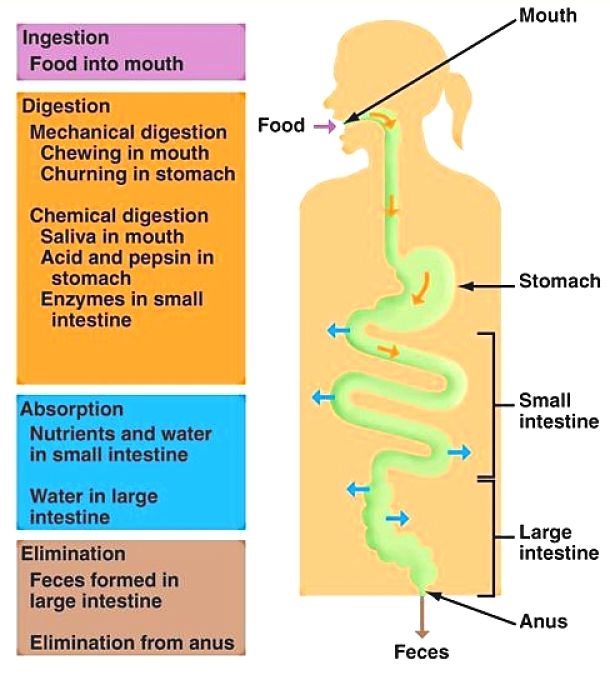
Six Stages on the Digestive Process:
Stage 1: Digestion begins in the mouth via chewing, saliva and enzymes;
Stage 2: Food travels to the stomach via the esophagus;
Stage 3: Food enters the stomach, where acids begin to break down food;
Stage 4: Food then enters the small intestine, where it is further broken down and many nutrients are absorbed;
Stage 5: Food passes through to large intestine, where other nutrients are absorbed, water is taken up with the remaining solids finally making their way to the colon;
Stage 6: Solid waste is stored in the rectum and excreted.
How Long does it take to Digest Food?
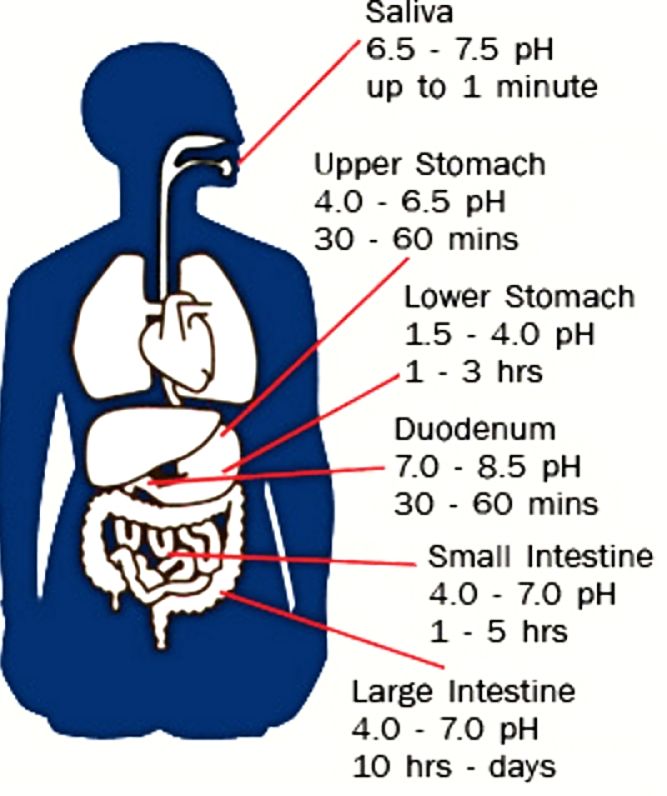
Digestion, that is the breakdown of food, starts immediately, the food enters the mouth. Indeed, some carbohydrates are absorbed in the mouth as the food is chewed and broken down by enzymes in the saliva. Acid and enzymes in the stomach further break the food down. However, most of the absorption taking place when the broken down food enters the small intestine. The food has been broken down into small particles and into the basic building blocks of carbohydrates, amino acids and fatty acids before it can be absorbed. Vitamins and other nutrients have to be released from the food particles and cells before they can be absorbed.
It normally takes about 6-8 hours for food to pass through your stomach and small intestine, and to enter the large intestine. This is where the food becomes fully digested. A sphincter or valve only lets soft food pass through. The solids are retained to be further processed. This means that various components of the food gets processed at different dwell times. Bacteria help with the final break down processes. It can take an additional 24-40 hours for the waste to actually be excreted through the anus. So what you eat for breakfast one day is not going to be fully digested until the end of the next day. What you eat for dinner is digested overnight while you're asleep and digestion is completed after 24-48 hours.
The exact time it takes for food to be digested depends on the elements in the meal, because the food tend to be bound together and the nutrients are only released when the food is fully broken down. Fiber is a mixed bag as it tends to bind the food helping its passage, but this means that some of the food may not be fully broken down before it is expelled. This may man that you miss out on some of the nutrients in the food
The table below shows type digestion times for various types of individual foods.
Some of the key points are:
- Fats and proteins take longer to digest than plant foods.
- Fats in the food can slow down the digestion of other foods in the meal.
- Meals high in fibre take longer to digest. The fibre adds bulk and binds everything together and this slows the transit time down.
- Grains are digested quicker than hard vegetables
- Cooked foods digest quicker than raw foods
- Liquefied foods such as smoothies, drinks and shakes are digested very quickly
How Long Does it Take to Absorb Nutrients from Food?
The various nutrients released gradually during the digestion process, such as vitamins, minerals, protein, carbohydrates and fats are absorbed at different points along the digestive tract. Most of the absorption of nutrients begins about 3-6 hours after the food is eaten, and takes place from the small intestine. Sugars are digested quickly and are absorbed through the stomach wall and the wall of the small intestine. Various enzymes released from the intestine help with the break down of carbohydrates, fat and protein. For example, bile acid helps break down fat, pancreatic juices help break down carbohydrates. Some nutrients are also absorbed via the large intestine at a later stage of the digestion.
How Does Diet Affect Digestion and Rate of Absorption of Nutrients?
One of the key influences on digestion rate and efficiency is what you are eating in a meal.
- => A steak dinner can take 2-3 days to get fully processed.
- => A meal of vegetables and fruits can be through in less than 12 hours.
- => The more fiber you eat, the quicker your body typically digests foods because fiber binds with your stool to help it move more easily through your body. But the binding process can lock up nutrients and stop you getting the full quota of nutrients in the food.
- => Physical activity also can speed the digestive process by stimulating the movement of stool through your intestines.
- => Factors that can slow your digestive process include drinking caffeine, taking certain prescription drugs or using products that contain nicotine.
- Stages of Chewing, Digestion, Nutrient Absorption and Waste Elimination
Chewing
Chewing mechanically mixes food with saliva from the salivary glands and mucin, a slippery protein in saliva. Each mouthful takes about 30–60 seconds to process
Swallowing
The food in the mouth is rolled into a small ball called a bolus, which is pushed to the back of the mouth by the tongue. Muscle contractions in the pharynx then push the bolus down towards the oesophagus. This swallowing reflex takes about 1–3 seconds.
Peristalsis
In the oesophagus, the ball of food is moved down by rhythmic contractions of the muscles present in its walls. This peristalsis takes about 5–8 seconds to move through the oesophagus reach the stomach.
Stomach Digestion
Food is mixed with gastric juice and strong muscular action from the stomach wall work the food to what is called 'chyme' – a thick milky material. The pyloric sphincter at the bottom end of the stomach slowly releases chyme into the duodenum when it is ready and liquefied. Emptying the stomach generally takes 2–6 hours.
Small Intestine
It takes about 3–5 hours for the liquid that enters the duodenum to exit from the ileum. The small intestine is lined by complex folds, villi and microvilli, which dramatically increases the absorptive surface area. This also allows maximum exposure to enzymes and helps with the absorption of the end products of digestion such as sugars, amino acids, fatty acids and all the nutrients.
Large Intestine - Caecum, Colon and Rectum
It takes about 5–12 hours for the liquid food to leave the small intestine and enter the first part of the large intestine known as the caecum – a small pouch that acts as a temporary storage site. The large intestine is 1.5–1.8 m (about 3 feet) in length and is divided into the caecum, colon and rectum. The 5 major functions of the large intestine are recovery of electrolytes, water and nutrients, fermentation of indigestible food matter by bacteria and the formation and storage of faeces. The bacteria ferment some of the more resistant food remains, releasing short-chain fatty acids and nutrients such as vitamin K. Residence times in the colon ranges from 4–72 hours, and averages of 36 hours. The waste from the large intestine is stored in the rectum until it is expelled.
The entire digestive process from eating food to excreting it can take between 24 and 72 hours.
Digestion Times for Various Foods
|
Fruit and vegetable juices, vegetable broth |
15 to 20 minutes |
|
Blended salads, vegetables and fruit, Shakes and Smoothies |
20 to 30 minutes |
|
Watermelon |
20 minutes |
|
Melons |
30 minutes |
|
Egg yolk |
30 minutes |
|
Cod, flounder, other fish and most seafood |
30 minutes |
|
Orange, grapefruit, grapes |
30 minutes |
|
Apples, pears, peaches, cherries, etc. |
40 minutes |
|
Salads chopped (tomaw, lettuce, cucumber, celery, bell peppers, other succulent vegetables) |
30 to 40 minutes |
|
Steamed or cooked leafy vegetables (spinach, kale) |
40 minutes |
|
The whole egg with white |
45 minutes |
|
Broccoli, cauliflower, zucchini, string beans, fresh greens |
45 minutes |
|
Root vegetables (carrots, beets, parsnips, turnips, etc.) |
50 minutes |
|
Salmon, trout, herring and other fatty fish |
45 to 60 minutes |
|
Com, potatoes, sweet potatoes, yams, chestnuts |
60 minutes |
|
Parsley, lemon |
1 1/4 hours |
|
Brown rice, millet, buckwheat, maize, oat flakes |
1 1/2 hours |
|
Lentils, chickpeas, peas, beans, 1.5 hours |
1 1/2 hours |
|
Skimmed milk, cheese and curd cheese lite |
1 1/2 hours |
|
Avocado, grapes, mango, olive, ripe raspberry |
1 3/4 hours |
|
Chicken |
1.5 to 2 hours |
|
Whole milk cottage cheesee |
2 hours |
|
Sunflower, sesame, pumpkin seeds, and the like |
2 hours |
|
Blueberry, sweet cherry, grapefruit, orange, raisin, coconut milk, artichoke, beet greens, garlic, potato, tomato, brown rice |
2 hours |
|
Fig, fresh, pear-fresh, pineapple, strawberry, asparagus, carrot, cauliflower, lettuce |
2 1/4 hours |
|
Turkey |
2 to 2.5 hours |
|
Blackberry, date, fig -dried, gooseberry, peach - fresh, almond, dandelion, greens, leek, mushroom, okra, bean, white rice, basmati rice |
2 1/2 hours |
|
Apple -fresh, apricot - fresh, currant, peach - dried, plum, watermelon, chestnut, coconut meat - fresh, pecan, pignolia, beet, summer squash, wheat bran |
2 3/4 hours |
|
Almonds, hazelnuts, peanuts, pecans, filberts, cashews, etc |
2.5 to 3 hours |
|
Lime, prune -dried, filbert nut, walnut, broccoli, cabbage, Swiss chard, sweet corn, endive, kohlrabi, rhubarb, spinach, winter squash, white bean, lentil, soybean, wheat germ |
3 hours |
|
Cranberry, cantaloupe, casaba melon, honeydew melon, olive oil, pomegranate, cashew nut , coconut meat-dried , celery , cucumber , onion , sweet green pepper , pumpkin, radish , rutabaga, sweet potato, turnip greens , watercress , snap bean , peas - fresh , peanut , millet |
3 1/4 hours |
|
Safflower oil, sesame seed oil , eggplant , mustard , greens peas - dried , soybean oil , rye |
3 1/2 hours |
|
persimmon, quince, red cabbage, barley, wheat |
3 3/4 hours |
|
Beef and mutton, lamb |
3 to 4 hours |
|
Brussels sprouts, horseradish, turnip |
4 hours |
|
Hard cheeses |
4 to 5 hours |
|
Pork |
4.5 to 5 hours |
